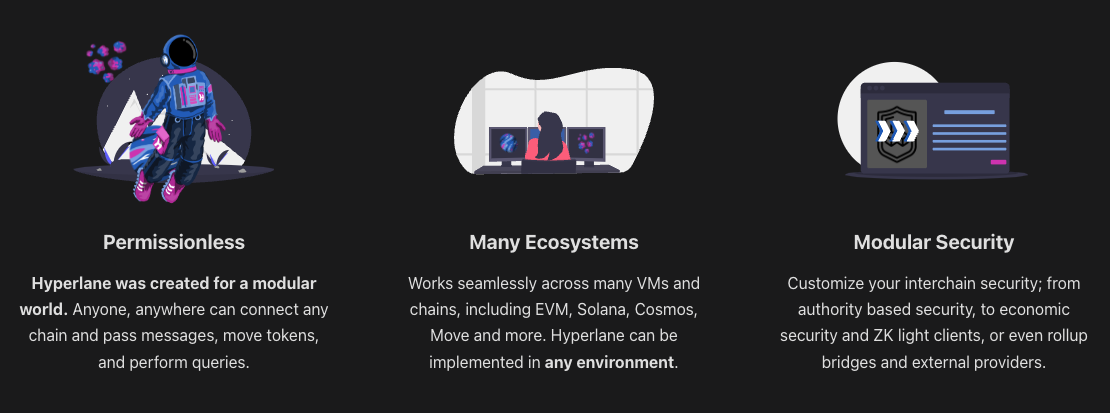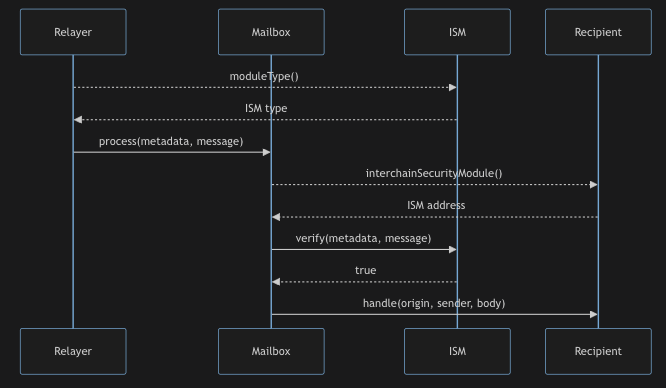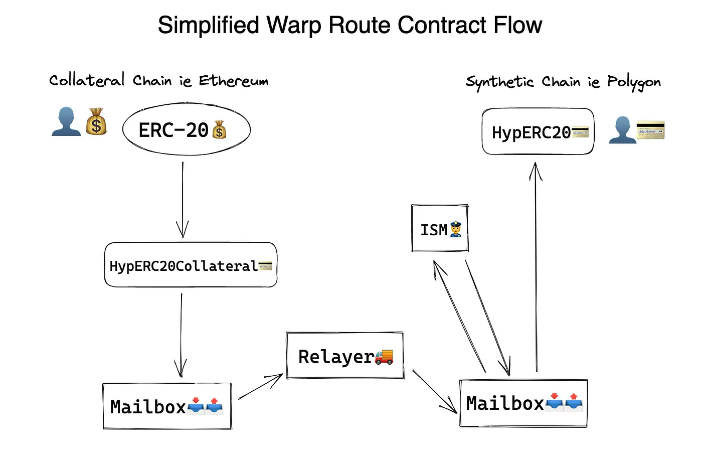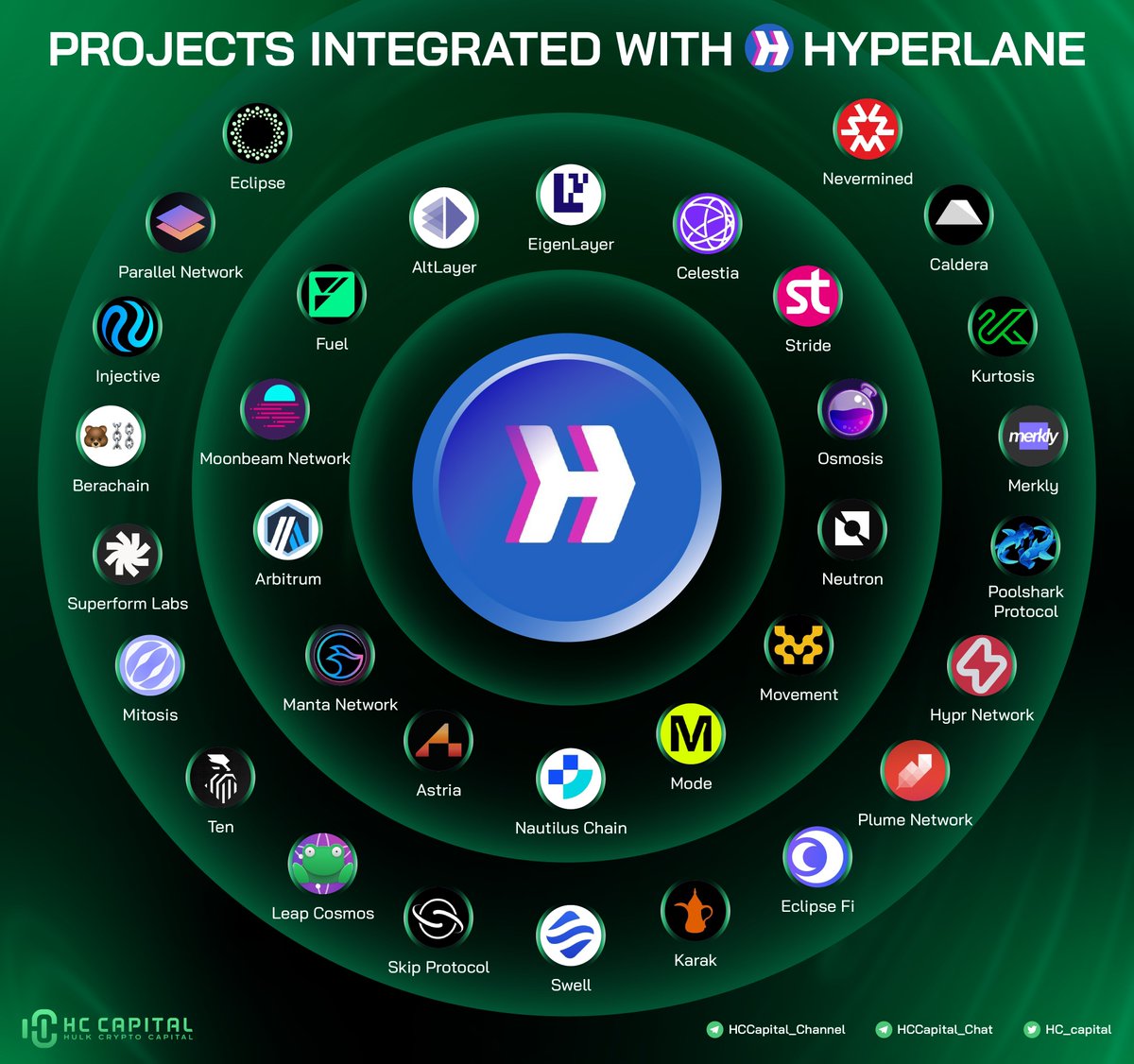Opening Remarks
In the world of Web3, securely and easily sharing data across blockchains is crucial. To overcome interoperability challenges in the crypto space, bridging technology is essential as it connects different blockchains to facilitate token exchanges and enhance liquidity.
Last month, the total volume of combined bridged transactions exceeded $11 billion, highlighting their critical role in the industry.

Source: DeFiLlama
Cross-chain bridges are not just about transferring tokens; they enable various operations across blockchains, from governance to launching new tokens, and enhancing gaming experiences.
In particular, Arbitrary Message Bridges (AMBs) have opened up possibilities for transmitting various data, including tokens, contract executions, and NFTs, making diverse interactions across blockchains possible.
We will focus on Hyperlane, exploring its design, security, and the trust it has established in this ecosystem, emphasizing its role in advancing interoperability, scalability, and liquidity in the crypto space.
Market Opportunities
Enabling different networks to collaborate seamlessly has always been a significant challenge. Typically, if developers want their new blockchain to communicate with other blockchains, they must go through a lengthy and often uncertain process to obtain permission from the teams managing these connections. This approach is often slow and may hinder growth, especially for newer or smaller projects with less influence.
Hyperlane is changing the game by allowing anyone to connect any blockchain network without waiting for approval from gatekeepers. This approach is known as permissionless interoperability, opening the door to innovation. Today, developers can quickly link their blockchain to others, speeding up the entire process and allowing them to focus on creating cool new things rather than waiting in line.

Source: Hyperlane
Furthermore, Hyperlane allows developers to choose their security level, known as Modular Security. Developers are no longer limited to a one-size-fits-all security setting but can customize it to perfectly fit their project.
By being so open and flexible, Hyperlane is paving the way for a future where blockchains can easily communicate, share information, and collaborate. All of this happens in a way that gives the people building these projects the freedom to innovate and ensure their work is secure on their own terms.
Hyperlane Project Overview
Hyperlane stands out as the first barrier-free layer for seamlessly connecting any blockchain. It allows developers to create applications between chains, simplifying the complexity of interactions between chains on any connected network. Additionally, its flexible security options enable developers to customize security based on their needs.
Moreover, Hyperlane comes with out-of-the-box features such as Warp Routes for easy cross-chain token transfers, Interchain Accounts for initiating contract calls from one chain to another, and Interchain Queries for accessing cross-chain information.
Hyperlane is designed to be modular, allowing developers to manage their security model through its interchain security modules.

Source: Hyperlane
Breaking the Cycle with Open Interoperability
The operation of Hyperlane is integrated as follows:
Deploy the Hyperlane system on any supported virtual machine (currently available on EVM, with Solana VM, Fuel VM, CosmWasm, and Cosmos SDK modules expected to be added by the third quarter of this year), without requiring anyone's approval.
Set security configurations using its modular security modules.
Hyperlane uses Interchain Security Modules (ISMs) for security protection. These smart contracts verify that messages sent to the destination chain indeed originate from the source chain. Developers can customize the default ISM of the Mailbox with an application-specific ISM to meet their specific application needs.

Source: Hyperlane
Easily transfer any asset between any chains using Warp Routes, bypassing the typical token whitelist approval required by traditional bridging technologies.
Warp Routes are the way Hyperlane enables permissionless transfer of ERC20 or ERC721 assets between any chains using Hyperlane. They allow you to set up transaction routes between any chain and those connected through Hyperlane.

Source: Hyperlane
Run and manage your own Hyperlane validators or relayers.
Hyperlane validators operate independently, do not form a network with other validators, and do not submit transactions frequently. They are set up for each specific source chain, and the guidance provided applies to single-chain setups.
Operation Principles
The new V3 version of Hyperlane introduces post-dispatch hooks and includes Interchain Gas Payment (IGP) as one of the necessary hooks. They are updating the documentation to reflect these changes.

Source: Hyperlane
Here are the specific details on how Hyperlane's mailbox smart contracts work, designed to facilitate secure and efficient interchain communication:
Key Features:
- Send Function: Initiates message sending, requiring message content, destination chain ID, and recipient address. Messages are stored in an incremental Merkle tree within the mailbox to assist Hyperlane's proof-of-stake protocol in verifying fraud proofs.
- Dispatch Function: Facilitates cross-chain message delivery, operated by relayers. It processes messages and any metadata defined by the relayers, forwarding this information to the recipient's Interchain Security Module (ISM) for validation. After approval by the ISM, the mailbox delivers the message to the designated recipient through the recipient.handle() function.
To successfully send a message across chains, two transactions are required: one to send the message from the origin chain and another to deliver the message on the destination chain. Hyperlane simplifies this process by providing an on-chain interface on the source chain. This allows the sender to directly pay the relayer responsible for delivering the message on the destination chain, a fee known as Interchain Gas Payment.
The introduction of post-dispatch hooks and Interchain Gas Payment in Hyperlane V3 aims to enhance the functionality and efficiency of interchain communication, ensuring a more robust framework for blockchain interoperability and application development.
Team, Infrastructure Support, and Strategic Partnerships
Hyperlane was co-founded by Asa Oines and Nam Chu Hoai, both early engineers at the decentralized finance platform Celo. Additionally, Jon Kol, who previously led the venture capital business at Galaxy, is also a founding team member. The company is based in Greenwich, Connecticut.
Hyperlane raised $18.5 million in a seed round led by Variant, with participation from prominent companies such as Galaxy Digital and CoinFund. According to co-founder Jon Kol in an interview with CoinDesk, the funds will be used for hiring, product development, and security measures, including bug bounties and further audits.
In terms of partnerships, Hyperlane has successfully established notable collaborations in 2023 and early 2024. Some of these partnerships include:
- Circle's CCTP Collaboration with Hyperlane: The collaboration between Circle and Hyperlane enables the implementation of the Cross-Chain Transfer Protocol (CCTP), enhancing cross-blockchain USDC transactions through permissionless interoperability and modular security features.
- Instant Interoperability with Celestia + Hyperlane: The collaboration between Hyperlane and Celestia introduces instant, permissionless interoperability for Celestia rollups, providing customizable security and asset support for easier integration and faster liquidity provisioning for developers.
- Expansion to Polygon zkEVM: By deploying on Polygon zkEVM in a permissionless manner, Hyperlane brings advanced interoperability and asset bridging to the platform, demonstrating its commitment to Indian crypto development and improving blockchain ecosystem connectivity.
- Introduction of Nexus: Supported by Hyperlane and Cosmos IBC, Nexus provides a unified interface for interoperability between Celestia, Cosmos, and EVM chains, facilitating easy token movement and seamless liquidity access across ecosystems.
- Integration of Hyperlane's inEVM Bridge into Injective Ecosystem: Hyperlane's inEVM bridge introduces permissionless interoperability to the Injective ecosystem, connecting it with Ethereum and preparing for future expansions, simplifying cross-blockchain integrations and promoting decentralized application adoption.
- Integration of Hyperlane with Skip Protocol: The collaboration between Hyperlane and Skip Protocol simplifies cross-chain transactions by integrating Warp Routes into DeFi platforms and wallets through the Skip API, improving user experience, enabling one-click transactions, and expanding access to unique cross-chain routes.
Competitive Analysis
Considering the fundamental functionalities of Arbitrary Message Bridges (AMBs), many projects are actively contributing to this field. Some notable ones include LayerZero, Wormhole, and Axelar.
Axelar
Axelar Network provides a secure, decentralized cross-chain messaging platform, facilitating seamless integration of EVM contracts across blockchains. It stands out for its ease of use, multi-chain compatibility, cost-effectiveness, and a secure, scalable architecture supported by efficient validators. Axelar connects EVM and Cosmos chains, with strong community support and substantial funding.
The network strengthens cross-chain transactions through solid infrastructure, meeting core functionalities and supporting application development. It ensures comprehensive functionality and robust security through the IBC protocol and module isolation. Axelar aims to build trust and security through external validator checks and balanced voting, with a focus on decentralized governance. Despite the challenges of adding new chains, Axelar's approach, including innovative voting and governance practices, aims to provide a scalable and reliable service for cross-chain communication.
LayerZero
LayerZero is a data messaging protocol designed for cross-chain communication, capable of transmitting lightweight messages between various blockchains with minimal assumptions. Its highlights include ease of development, cost-effective operations through off-chain Oracles and Relayers, and wide applicability to dApps. Supported by significant crypto investments, LayerZero has attracted major dApps and supports 11 chains, providing tools like LayerZero Scan to track transactions.
The protocol's architecture revolves around Endpoints for chain communication, securely delivering messages using Oracles and Relayers without intermediary trust. It boasts high transaction efficiency, requiring gas only at the source, and ensures security through independent verification and high attack thresholds.
While LayerZero has strong design and security mechanisms, its model involves challenges related to decentralization, reliance on external participants for operation, and the inherent security of connected chains.
Wormhole
Wormhole serves as a bridge connecting at least fourteen blockchains (such as Ethereum, Solana) through a decentralized "guardian" network for cross-chain data and asset transfers. Its highlights include connecting non-EVM and EVM-compatible chains, safeguarded by reputable validators, and providing low-cost transactions for users.
The protocol operates based on Proof of Authority, with validators ensuring the integrity of cross-chain messages. Transactions require approval from a majority of guardians to be considered valid, promoting secure and straightforward cross-chain interactions.
Wormhole has become a trusted platform in the cross-chain space, backed by strong institutional partnerships.
Unique Positioning of Hyperlane
Hyperlane's unique positioning lies in its alignment with the continuous evolution of the crypto ecosystem, particularly towards modularity and permissionless development, to adapt to dynamic market demands. In this context, Hyperlane has made significant progress in areas where other messaging protocols struggle to balance.
However, in this space, the longevity of a protocol can also greatly reflect its reliability and accumulated trust over time. In this regard, other projects may surpass Hyperlane in certain aspects.
Each bridge has its unique design and method for validating cross-chain messages, meaning they all have their trade-offs and may sometimes sacrifice security. As demonstrated by past bridge hacks, even a small vulnerability can lead to losses of millions of dollars. Given that any code in these protocols may contain vulnerabilities and considering that bridges are prime targets for hackers, prioritizing continuous audits and maintaining bug bounty programs is crucial for developers.
Currently, the cross-chain space is still in its early stages, exploring various design approaches and consensus mechanisms, with different protocols and dApps conducting real-time experiments. For example, Injective focuses on Axelar, Portal Bridge leverages Wormhole, and Stargate utilizes LayerZero.
Hyperlane stands out in adapting to the dynamic market demands by consistently evolving with the crypto ecosystem, particularly towards modularity and permissionless development. Hyperlane has made significant progress in areas where other messaging protocols struggle to balance.
However, the longevity of a protocol in this space can also greatly reflect its reliability and accumulated trust over time. In this regard, other projects may surpass Hyperlane in certain aspects.
Token Economics
As of now, apart from the role of the Hyperlane token in the protocol's proof-of-stake layer, no exact details about the Hyperlane token have been confirmed. Users may be able to stake the token to validate cross-chain messages and earn rewards for contributing to network security.
Bullish Factors
- Hyperlane's vision is to provide secure infrastructure for the development of secure interchain applications. This initiative is backed by a strong team and enjoys strong endorsements.
- With the recent surge in the crypto market, Injective has emerged as a leading project. Hyperlane achieves seamless interoperability across various blockchain platforms, expanding the influence and efficiency of Injective's dApps and assets. Combined with Hyperlane's numerous partnerships and the buzz surrounding potential airdrops, this may lead to wider adoption of the protocol.
- The Hyperlane ecosystem is rapidly expanding, with the number of integrations increasing from the first quarter of 2024.

Source: HC Capital
Bearish Factors
- The lack of details about token economics makes investment analysis for the project complex and challenging.
- Competing projects have solidified their presence in the market, with monthly trading volumes reaching billions. While Hyperlane may have a strong start, it needs to establish its unique value proposition.
Conclusion
Hyperlane has emerged as a prominent player in the blockchain interoperability space, proposing a decentralized and scalable strategy. Its innovative modular messaging system, combined with permissionless penalty mechanisms, sets new standards for addressing long-standing challenges faced by other messaging protocols.
Witnessing the development journey of Hyperlane and the innovative applications it will enable will be very interesting.
免责声明:本文章仅代表作者个人观点,不代表本平台的立场和观点。本文章仅供信息分享,不构成对任何人的任何投资建议。用户与作者之间的任何争议,与本平台无关。如网页中刊载的文章或图片涉及侵权,请提供相关的权利证明和身份证明发送邮件到support@aicoin.com,本平台相关工作人员将会进行核查。




